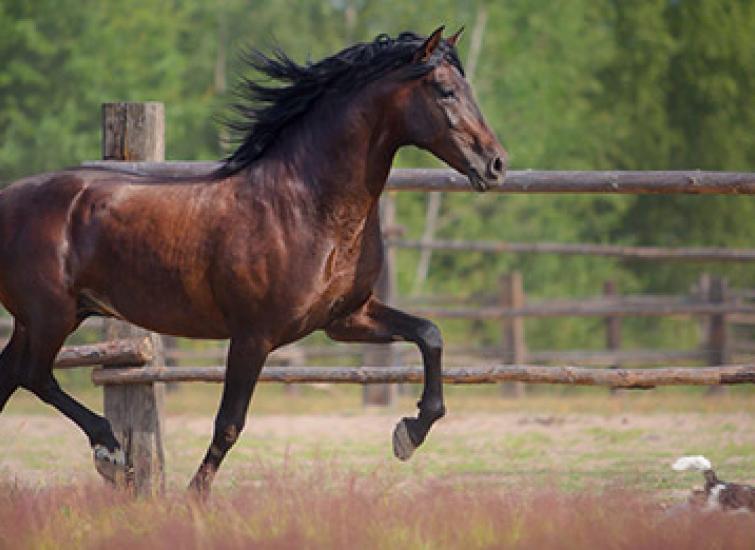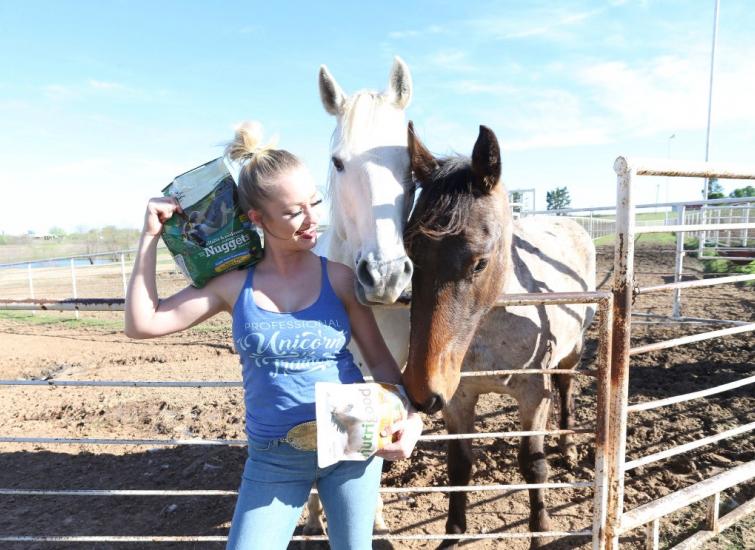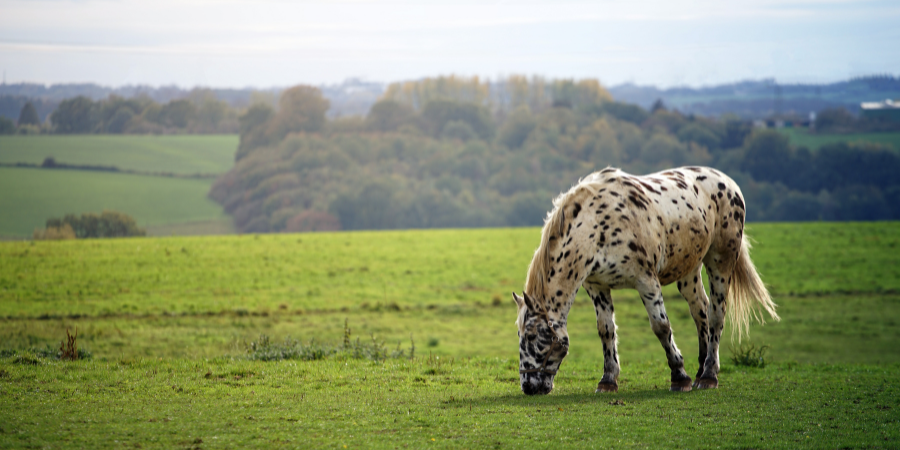
Horse Hay and Feed Nutrition
What do the values mean in relation to a horse’s dietary fiber, and why are the measures important?
Neutral Detergent Fiber (NDF) and Acid Detergent Fiber (ADF) measure the fiber’s plant cell wall composition including cellulose, hemicellulose, and lignin. These values can indicate the digestibility and palatability of high fiber horse feeds like alfalfa, teff hay, beet pulp, commercial feed and more. NDF and ADF values are often used to determine:
- amount of forage that can be digested by the horse
- sum of digestible nutrients and other energy measures
- relative feed value (a measure used to determine the right forage for specific horse performance
NDF and ADF values for horses can indicate feed digestibility and palatability. Choosing the right NDF and ADF value ranges can help support your horse’s health, well-being, reproduction, performance, and growth. Additionally, selecting feedstuffs within ideal ranges can significantly reduce feed expenses and help avoid costly vet bills.
What is NDF for horses?
The NDF measure is the total cell wall which includes cellulose, hemicellulose, and lignin. The NDF value can indicate the amount of forage a horse can consume given physical bulk and space in the digestive tract. For example, as NDF rises, the dry matter ingested generally decreases.
What is ADF for horses?
ADF refers to the forage cell wall components that are composed of lignin and cellulose, a main indicator of forage digestibility. As ADF rises, the digestibility of the forage and therefore energy yield, typically decreases.
To better understand the significance of NDF and ADF, let’s review the foundational role fiber plays in equine nutrition.
Importance of Fiber for Horses
Fiber is essential for horse nutrition. Fiber is an important part of all equine diets. Horses’ digestive tracts can utilize dietary fiber supplies for energy that is critical for daily maintenance metabolism. Without adequate fiber, a horse’s digestive system can’t work efficiently and renders horses at a greater risk of metabolic diseases.
Fiber for Horse Gut Health
Fiber helps maintain gut motility and hindgut microbial balance. Fiber is an amazing source of energy for horses. Additionally, fiber helps regulate gut motility (insoluble fibers) and preserve the hindgut’s delicate microbial balance.
Providing a horse with the right type of fibrous feed helps promotes fermentation which keeps the microbiome stable and healthy. This can help reduce the horse’s risk for hindgut acidosis, colic, gastric ulcers, and behavioral problems like wood chewing and cribbing.
What Does Digestibility Mean for Horses?
Digestibility is defined as how easily a feedstuff can be broken down or digested. It is through digestion and absorption that the nutrients contained in forages and other feed materials can be utilized by the animal. Feedstuffs with lower digestibility are more difficult to digest and less fully digested, yielding fewer nutrients the horse can utilize.
Foods and feeds that are highly digestible are easily broken down, helping the animal absorb more nutrients and yield more energy (calories). Digestibility is crucial for a horse’s health and nutrition as it determines how well the horse can absorb the plant's nutrients.
Fiber can fluctuate greatly in quality and, therefore, digestibility. For instance, two different forage types may contain the same nutritional composition. The less digestible one cannot be absorbed as well. Therefore, valuable nutrients will be passed in manure.
It’s important to remember that not every horse needs to be fed the most digestible high quality forages or hay. Furthermore, horses should not be fed exclusively lush, digestible hay and forages. Oftentimes what is considered to be high-quality, digestible hay can be high in sugars and simple carbohydrates. Excessive intake of these nutrients can lead to weight gain, colic, and laminitis.
By definition, fiber is a nutrient which is “resistant to the action of digestive enzymes”. This means that fiber is not “digested” in the same way that other nutrients are.
For example, protein, fat, and simple carbohydrates are typically digested in the small intestine with the help of digestive enzymes. Fiber is “digested” or, more accurately, fermented primarily in the large intestine and cecum (after food material has passed the small intestine). The calories a horse can yield from fiber depends on the gut microbe's ability to break it down, or ferment it.
A plant's main fiber components include hemicellulose, cellulose, lignin, and pectin. The hindgut microbes can digest and ferment pectin, hemicellulose, and cellulose to varying degrees, transforming them into an energy source. Conversely, microbes can’t break down lignin. The more lignin in a forage, the less energy an animal can yield from it.
NDF and ADF Content Guidelines for Horse Hay and Feed
NDF and ADF values can be a tool to help determine the best forage to feed your horse for its particular needs. However, one NDF ADF value range does not fit all equine nutrition needs.
For broodmares, performance and young horses, ADF content between 30-35% and NDF between 40-50% is generally ideal. Easy keepers and mature horses being maintained may benefit from forage with somewhat higher values. Hays with an ADF above 45% or an NDF above 65% aren't recommended for horses but may be appropriate for donkeys.
How are NDF and ADF Measured?
Forage and feed NDF and ADF values are measured by laboratory testing. One way NDF can be extracted is by treating the forage sample with a neutral detergent solution (NDS) and rinsing with amylase (heat-stable). This makes the pectins, starches, and sugars soluble. The residue that remains is hemicellulose, cellulose, and lignin.
To obtain the ADF value, the hemicellulose in the forage sample is made soluble using an acid detergent solvent (ADS). The residue that remains is the ADF fraction of cellulose and lignin.
NDF and ADF in grass hay like Teff and Timothy will also fluctuate with age:
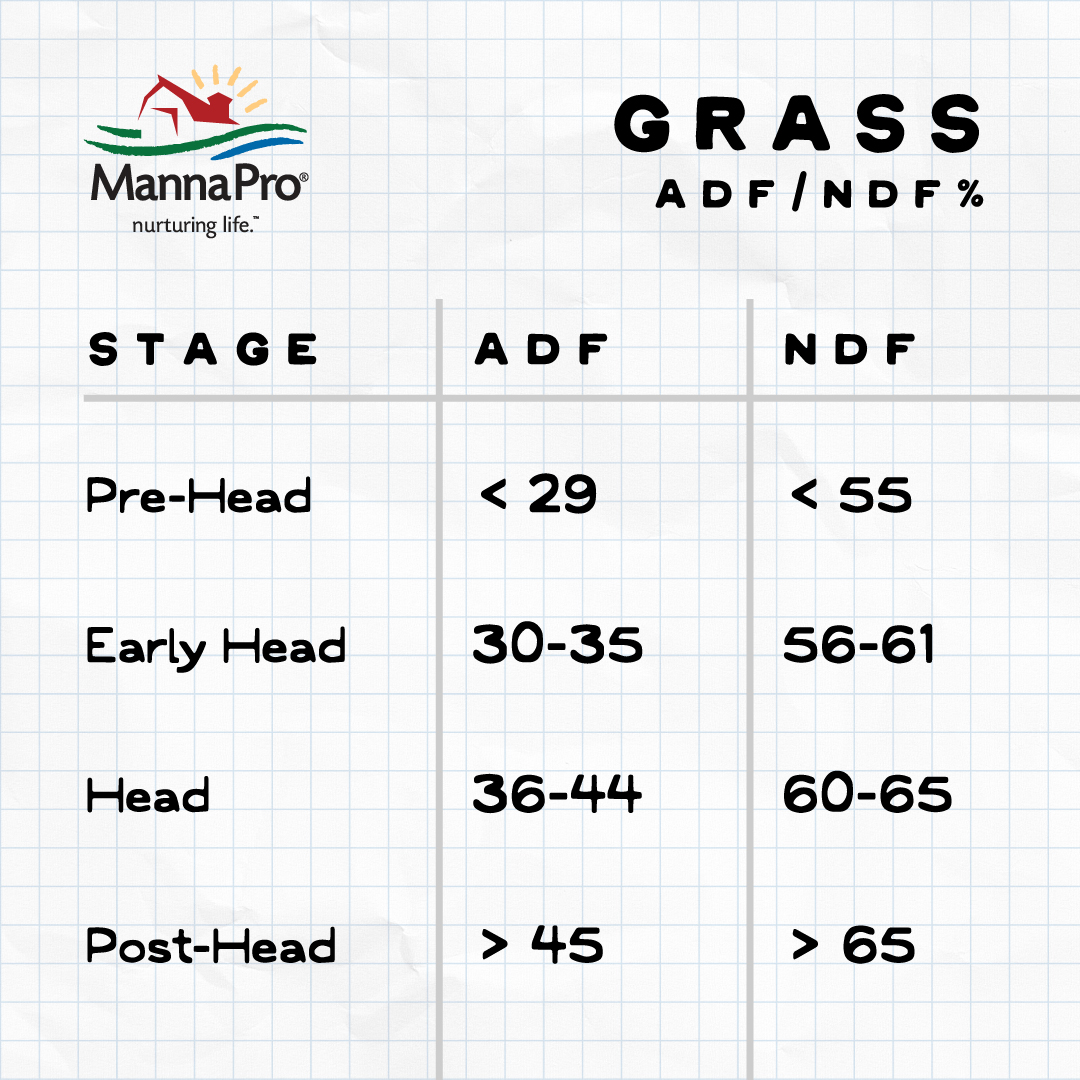
NDF and ADF percentages in alfalfa will vary with cutting stage:
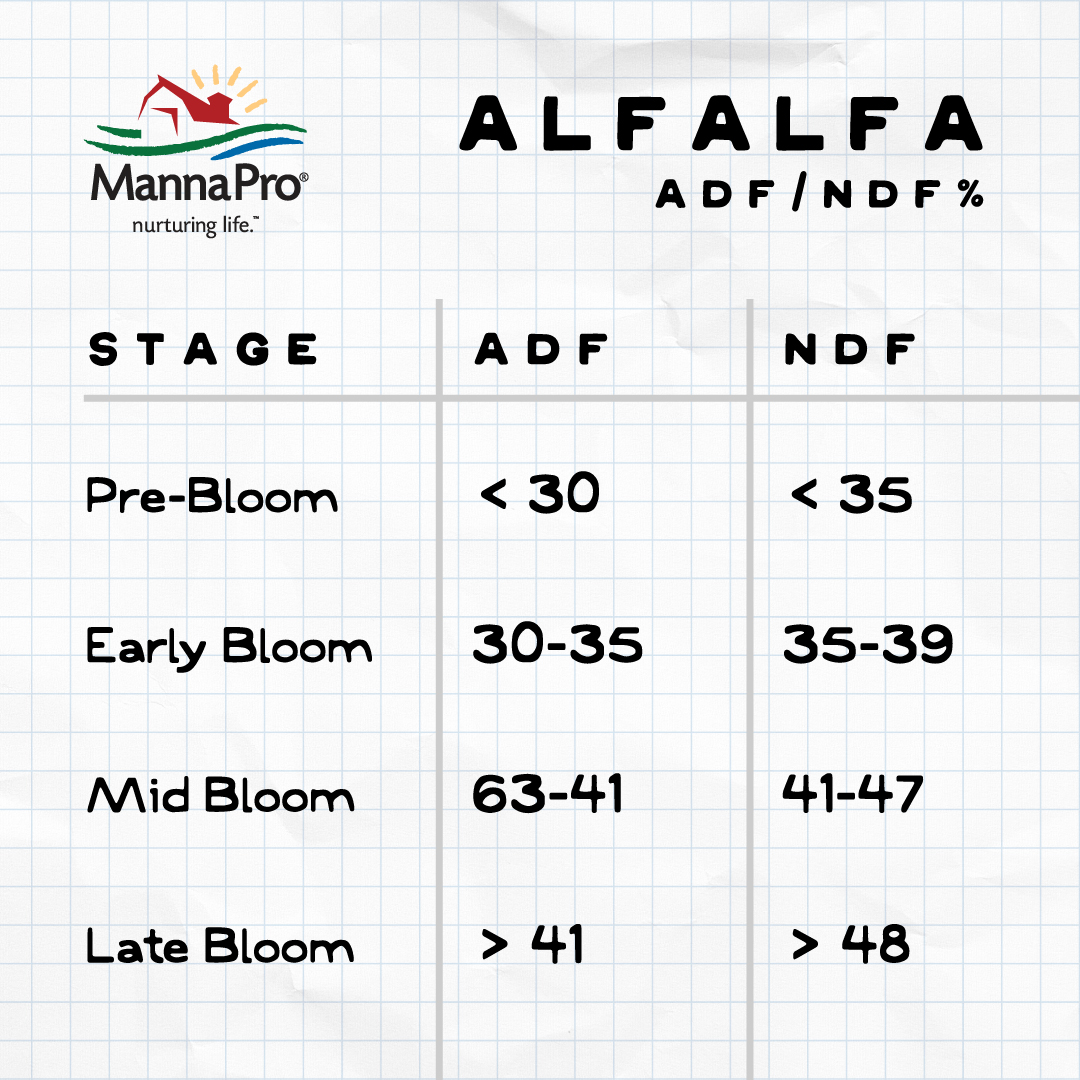
How to Find out NDF and ADF Feed and Forage Content
Many commercial feeds have the NDF and ADF values listed on the product’s feed label. If the values aren’t listed on the feed, you can always contact the feed manufacturer directly to obtain the information.
Hay and pasture grasses can easily be tested by a lab. Below are several links to labs that do testing.
Forage and Feed Testing Labs:
Hay Analysis Sampling
Sending hay samples to a lab for NDF and ADF testing? It’s recommended to get your hay tested using a hay probe to obtain a cross-sectional bale core sample. This method gives you a representative subsample from individual bales.
Key Takeaways
-
Adequate, nutritional fiber based on your horse's life stage and activity level is critical for health, performance and well-being.
-
NDF and ADF values can help you choose the right forage intake and feed for your horse’s unique fiber and nutritional needs.
-
Inadequate fiber with suboptimal fiber levels can lead to severe health challenges and increased vet and feed costs.
-
Hay and pasture grass can be economically tested for NDF and ADF values.
-
Equine veterinarians and equine nutritionists are great resources to assist you in tailoring a diet that works best for your horse.
